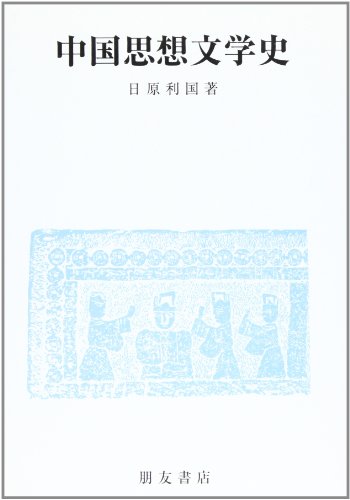- 著者
- バトオチル バルジンニャム Bat-Ochir BALJINNYAM
- 出版者
- 総合研究大学院大学文化科学研究科 / 葉山町(神奈川県)
- 雑誌
- 総研大文化科学研究 = SOKENDAI Review of Cultural and Social Studies (ISSN:1883096X)
- 巻号頁・発行日
- no.18, pp.(1)182-(15)168, 2022-03-31
本稿は、モンゴル国ウブルハンガイ県ハラホリン郡で行った聞き取り調査をもとに社会主義期モンゴルにおいてノルマを達成するため、牧民同士で相互的に行われていた「家畜泥棒」を互奪性という概念を用いてその実態を明らかにすることを目的とする。「家畜泥棒」とは、文字通り、他者の家畜を盗み、それを自分のものとして所有をすることである。しかし、遊牧民同士での相互的に取り合うという不思議な現象が存在する。モンゴル高原では社会的な役割を持つ「家畜泥棒」が記録されているのは、筆者の知る限り、清朝支配の末期の頃である。この時期、富裕な王侯貴族と漢族の商人に借金を負う遊牧民との間に貧富の格差が広がってきた。そんな中、貴族や金持ちの家畜を盗み、もっと貧しい人々に分配する「シリーン・サイン・エル(平原の良き男)」という義賊たちが生まれたのである。モンゴルにおいて特徴的なのは、比較的平等社会であった社会主義期においても「義賊」が存在したという点である。本稿では、牧畜共同組合の成員たちが家畜の生産頭数のノルマを達成できなかったとき、「サイン・エル(良き男)」と呼ばれる義賊に家畜を盗んできてもらうよう依頼していたことを報告すると同時にその「意義」について考察するものとする。当時のモンゴル人民共和国の計画経済政策により牧畜協同組合(ネグデル)や国営農場(サンギーン・アジ・アホイ)に設定された計画「ノルマ」を達成するため、地方の人々は必死に働くことになった。しかし、その一方で家畜は「生きた財産/生産手段」であるので、季節によってはガン(干害)やゾド(寒害)が起こると家畜が大量死する。そんなときネグデルの家畜を放牧する牧民たちは、何とかしてノルマを達成させるために「家畜泥棒」に他の地域から盗むことを依頼するわけである。こうした社会主義時代の家畜泥棒は、「サイン・エル(良い男)」と呼ばれた。つまり、モンゴル人民共和国では「盗まれた家畜(馬)が操作可能な資源としてインフォーマルな社会関係の源泉のひとつとなっていた」ということである。そして、こうした家畜を盗む人が、人々からサイン・エル、すなわち「良い男」として肯定的に評価されてきたことから判断するに、非公式な形ではあるが、モンゴルの地方の牧民が「家畜泥棒」互奪性によって、ノルマ達成の重圧から救われてきたということである。This article discuss about livestock theft from a viewpoint of the exchange concept in social and cultural anthropology. Research work was conducted based on materials obtained from fieldwork in Kharkhorin Soum, Övörkhangai Province in central Mongolia. One of the purpose of this research is to explore whether livestock theft in the name of the exchange concept existed in Mongolian nomadic pastoral culture for an extended period as a cultural practice or it has taken place as a social phenomenon. Livestock theft is now considered to be a social issue that is usually dealt with through law enforcement. However, in this study, I would like to describe it as a normal social occurrence based on traditional nomadic culture.Now a problem for herders, livestock theft was previously an exchange phenomenon in nature. It has been proved by the facts and fieldwork analysis of the livestock theft process and the theory of exchange.Caroline Humphrey and David Sneath mentioned that “The surplus that is not recovered for reproduction in the mandatory delivery plan (quota) was called “manipulable resources”. By the time there is no “market” in socialist society, such a system of exchanging surplus goods was expressed as the number of inventories, not money. The surplus was a good that could be used as a tool for political negotiations. Humphrey argues that these “manipulable resources” were the source of informal social relations under the socialist regime”. It is undeniable that such transactions may have existed in the pastoral cooperative (Negdel), which corresponds to the Kolkhoz in Mongolia, and the state-owned farm (Sangiin Aj Akhui), which corresponds to the Sovkhoz. On the other hand, what kind of measures were taken when the pastoralists who made up the general Negdel who were not executives could not achieve the quota? Perhaps it was the existence of a thief called “Sain er” who responded to that.From the information obtained in this study, it can be said that in the Mongolian People’s Republic, livestock theft and exchange (of horses) were sources of informal social relations built through manipulable resources. Judging from the fact that those who stole livestock in the context, from a community at the request of another community, were positively evaluated by local people as “Sain er,” that is, a “good man,” in the Mongolian rural pastoral communities, it can be said that theft with “reciprocity” shows that the local people were saved, informally though, from the pressure of achieving quotas.Livestock theft involves many kinds of social and cultural contexts, and therefore, it was allowed as a necessary factor in nomadic pastoralism in the daily process of nomadic people, but under modern laws, it is recognized as “theft” by people today.
4 0 0 0 オイラト・モンゴル文語概説
- 著者
- オチルバト・サンボードルジ 橋本勝 [著]
- 出版者
- 大阪外国語大学「世界を学ぶ語学シリーズ」プロジェクト
- 巻号頁・発行日
- 2005
2 0 0 0 OA モンゴル国現存遺蹟・碑文調査研究報告
目次1 (本文Mongli1.pdf) : 略号・文献目録 / 調査行程表・行程図 / 行動記録(1996,1997,1998年度) / GPS計測値表
1 0 0 0 モンゴル国現存遺蹟・碑文調査研究報告
- 著者
- 森安孝夫 オチル責任編集
- 出版者
- 中央ユーラシア学研究会
- 巻号頁・発行日
- 1999

